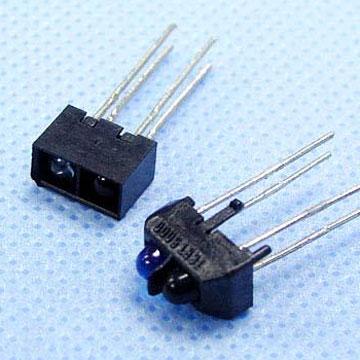The proliferation of advanced electronic control systems has made optical sensors more accurate and reliable while increasing response time, robustness, communications capabilities, and efficiency. The continuous innovations and investments in research and development to meet changing consumer preferences has led to improved fabrication techniques and enhanced sensing abilities at lower costs, thus driving market growth.
An optical sensor transforms light beams into electronic signals to measure and then transform light quanta into instrument-readable form. Optical sensors are integrated into a larger system containing a light source and measuring device along with the sensor. The whole setup is connected to an electrical trigger that responds to light signal variation occurring within the respective light sensor. When a change in the light beam occurs, an optical sensor acts as a photoelectric trigger for increasing or decreasing electrical output.
The optical sensor market has applications across various segments including night vision cameras, biometrics, partial discharge detection, biological imaging, and chemical sensing, among others. Military and law enforcement holds the largest market share in the optical sensor market by application -- 24.8% in 2014 -- and is expected to hold the position of market leader through 2020.
Aerospace and defense holds the largest market share in the optical sensor market by industry end user. The aerospace and defense segment held a market share of 33.2% in 2014 and is expected to hold the position of market leader throughout the forecast period.
North America held the largest market share in the optical sensor market at the global level. Huge investment in military and aerospace, research and development, and upcoming business utilities is one of the major factors fueling the demand for the optical sensor market in this region. North America held a market share of 37.7% in 2014 and is expected to hold the position of market leader throughout the forecast period. However, Asia-Pacific is the fastest-growing segment.
The global optical sensor market was valued at $291.6 million in 2014 and is expected to reach $971.8 million by 2020, growing at a tremendous CAGR of 25.2% between 2015 and 2020. The aerospace and defense segment was valued at $96.8 million in 2014 and is expected to reach $315.8 million by 2020, growing at a CAGR of 24.8% from 2015 to 2020.
“Optical sensors have major applications across various sectors such as commercial, defense, medical equipment, and research and development,” says BCC Research photonics analyst Sinha G. Gaurav. “Increasing deployment of optical sensors across these segments is expected to fuel the demand for optical systems at the global level.”
LOOKING AHEAD
Advancements in Internet connectivity, growing investments in new information technology, and developments in the telecommunications sector in developing countries such as India, China, and South East Asian countries are expected to drive the optical sensor market through 2020. Rising demand for simultaneous point and distributed configuration of sensors is also expected to drive the market.
Moreover, optical sensors offer benefits such as wide dynamic range, amenability to multiplexing, compactness and flexibility, and immutability to electromagnetic interference. Due to these benefits, applications of optical sensors are increasing across different industry verticals.
Owing to these factors, the optical sensor market has huge potential and is expected to experience significant growth over the next five years. Indeed, rising demand for optic microbial sensors for measurement of biochemical oxygen demand (BOD) in the wastewater management industry has positively impacted the overall growth of the market.
In addition, the increasing application of oxygen-sensitive optical sensors (such as intra-arterial blood gas sensors) in the healthcare sector is expected to drive the growth of the optical sensor market over the near term. Moreover, with the increase in the number of Internet users across the world, a higher demand for bandwidth is evident and telecom vendors have started expanding existing networks and building optical fiber networks. Consequently, the need for optical sensors is expected to increase considerably in the coming years.



